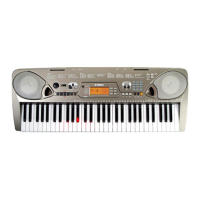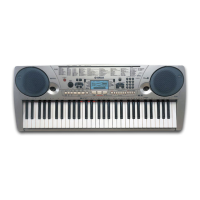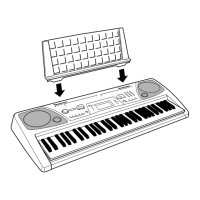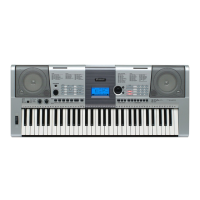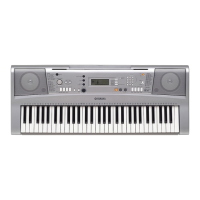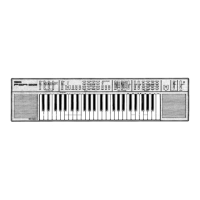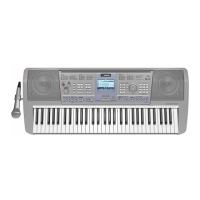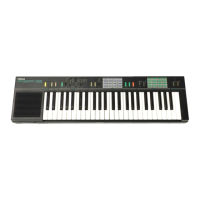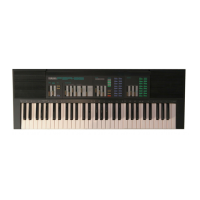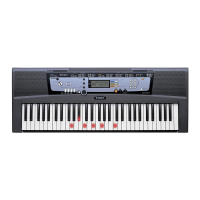
Do you have a question about the Yamaha Portatone EZ-200 and is the answer not in the manual?
| Type | Portable Keyboard |
|---|---|
| Keys | 61 |
| Touch Sensitivity | Yes |
| Polyphony | 32 |
| Styles | 100 |
| Display | LCD |
| One Touch Setting (OTS) | Yes |
| Lesson Function | Yes |
| Headphones | Yes |
| MIDI | No |
| Voices | 375 |
| Yamaha Education Suite (YES) | Yes |
| Effects | Reverb, Chorus |
| Speakers | 2 x 12cm |
| Power Supply | Adaptor (PA-3C/PA-3B) or Batteries (Six "AA" size) |
Critical safety advice for power, water, fire, and abnormalities.
Cautions for power supply, battery, and instrument placement.
Comprehensive music learning tools.
Powering via AC adapter or batteries.
Step-by-step guide for AC adapter usage.
Step-by-step guide for battery installation.
Steps to power on the instrument.
Identification and function of front panel buttons.
Identification and function of rear panel jacks.
Visual guide to rear panel connections.
Steps to turn on and set volume.
How to play the built-in demo songs.
How to choose and play various instrument sounds.
How to turn on and start the metronome.
How to adjust the tempo.
How to choose and play a style rhythm.
Expanding rhythm with backing and chords.
How playing chords starts and controls the style.
Basic steps for powering up and adjusting volume.
Explains all parts of the main display.
Key lights for learning songs.
Displayed fingerings for playing.
Adjusting the key that divides left/right sections.
Immediate, Chord, and Tap start methods.
Immediate, Sync Start, and Ending stop methods.
Explains Intro, Main, Fill-in, and Ending sections.
How to look up chords and their fingerings.
How to select and change setting items.
Connecting to other MIDI devices for data transfer.
Connecting to computers via USB-MIDI.
Solutions for sound, playback, and connection problems.
Troubleshooting footswitch and button behavior.
Details on MIDI message transmission and recognition.
Explanation of MIDI messages for effects and settings.
Details on keyboards, display, setup, controls, voice, style, etc.

